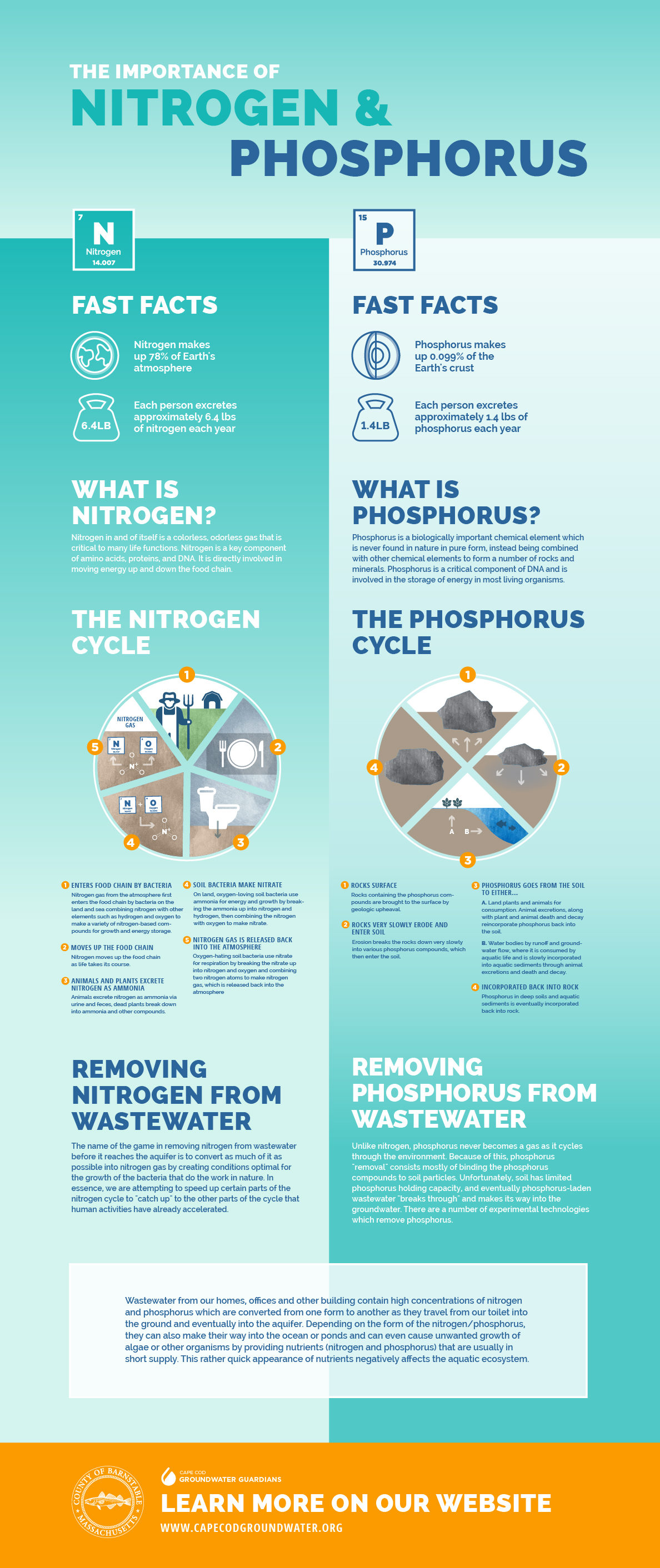
A closer look at the nitrogen cycle:
1. Nitrogen gas from the atmosphere first enters the food chain by bacteria on the land and sea combining nitrogen with other elements such as hydrogen and oxygen to make a variety of nitrogen-based compounds for growth and energy storage.
2. Nitrogen moves up the food chain as life takes its course.
3. Animals excrete ammonia via urine and feces, dead plants break down into ammonia and other compounds.
4. On land, oxygen-loving soil bacteria use ammonia for energy and growth by breaking the ammonia up into nitrogen and hydrogen, then combining the nitrogen with oxygen to make nitrate.
5. Oxygen-hating soil bacteria use nitrate for respiration by breaking the nitrate up into nitrogen and oxygen and combining two nitrogen atoms to make nitrogen gas, which is released back into the atmosphere.
6. Nitrogen gas in the atmosphere then begins the cycle again.
A closer look at the phosphorus cycle:
1. Rocks containing the phosphorus compounds are brought to the surface by geologic upheaval.
2. Erosion breaks the rocks down very slowly into various phosphorus compounds, which then enter the soil.
3. Phosphorus in the soil follows a couple of different pathways:
a. Some of the phosphorus is transported to water bodies by runoff and groundwater flow, where it is consumed by aquatic life and is slowly incorporated into aquatic sediments through animal excretions and death and decay.
b. Some of the phosphorus is consumed by land plants and animals. Animal excretions, along with plant and animal death and decay re-incorporate phosphorus back into the soil.
4. Phosphorus in deep soils and aquatic sediments is eventually incorporated back into rock.
